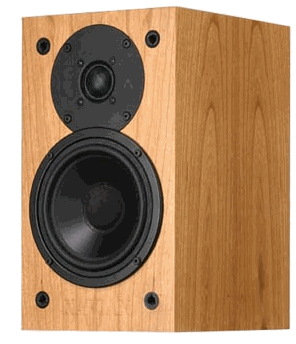Xavian Electronics Model MIA
| Xavian Electronics Model MIA |
|
Milan Cernohorsky |
|
16 May 2001 |
Type: 2-way mini monitor
Suitable amplifier: 30-120 Watts
Impedance: 8 Ohms
Sensitivity: 2,83 Volts / 1 meter, 85dB
MFR /- 3dB in reference axis /: 60 Hz – 20 kHz
Woofer: Peerless, 130mm, polypropylene
Tweeter: Seas, 27mm, impregnated soft dome
System: Open, Dumped Bass-Reflex
Crossover frequency: 3kHz
Dimension / cm D×W×H: 203 × 170 × 290mm
Weight in kg: 5.5kg each
Finish: wood veneer, walnut or cherry
Tel / Fax: 0042 0312 687 087
Price: 11,700 CZK per pair
Xavian Electronics,
Wolkerova – areal MTH,
272 01 Kladno, Czech Republic
Mail: xavian@xavian.cz
Web: http://www.xavian.cz/
Introduction
The Italian designer Roberto Barletta, currently living in Prague, and his team of collaborators have set a high quality standard. Xavian Electronics, established in 1994, has long been renowned for high quality loudspeakers from entry-level to high-end models. Their products are sought by European audiophiles who enjoy great sound and top-notch build quality. Xavian uses ScanSpeak, Seas and Peerless drivers amd offers two lines: Classic and Xn. The entry-level MIA is the Classic Line’s most recent production. All Xavians speakers are handcrafted and finished in wood veneers.
General Description
The MIA is a compact, two-way monitor with a 130mm polypropylene woofer and 27mm soft-dome tweeter. The MIA features a symmetrical design, the tweeter directly above the woofer. Each cabinet is made of dense particle board, providing a sturdy feel. Thanks to the rock-solid cabinet, internal bracing and ample dampening material, the MIA has no audible bass resonances. The internal crossover network is a simple, tidy design with a 6 dB / octave low-pass filter on the woofer and what appears to be a 6 dB / octave high-pass filter on the tweeter. The crossover point is set at 3 kHz. There’s a 60mm bass-reflex port in the rear. Speaker cables attach to individually mounted gold-plated binding posts that also accept banana plugs. No plastic caddy. The snap-on grill is easily removed, and I found the MIA to be more attractive with it off. The monitor is finished in an attractive cherry or walnut veneer.
Sound
I was immediately impressed by the deep bass response. The speakers faithfully reproduce a kick drum, as well as five-string and synth basses. This monitor, suitable for all manner of musical genres, has the clarity and bass response you expect to hear from a much larger system. It reproduces timbres with near-pinpoint accuracy and defines the input signal’s finest details and harmonics. In addition to the MIAs’ impressive bass response are a well articulated midrange and treble, resulting in a tight, well controlled sound without overshoot or flabbiness. Nothing in the presence range sticks out. The stereo imaging is very good, and resolution is consistent throughout the frequency range.
The monitor excels at uniform image across a wide area, allowing for a broad sweet spot. For the price, the MIAs do an admirable job for every type of music I played: pop, classical, rock, jazz and blues. These aren’t souped-up speakers designed to make music sound “better” than it is. Rather, the MIAs provide a reasonably accurate sonic picture. I also found these monitors to be quite detailed.
So how do these rather inexpensive speakers compare with the Energy C-2 at 500 USD? In a nutshell, very well. The Energy C-2 has a bigger sound, with deeper bass response and less pronounced midrange frequencies than the MIAs. These aspects make the Energy sound louder at the same power level. But MIA’s soundstage seemed equally deep and greater in height. During Orlando Di Lasso’s Lassus, with The Hilliard Ensemble (Winter & Winter), with eyes closed, I could easily place the location of each solo vocalists in a thoroughly silent setting. Increases in focus and definition became noticeable. The entire tonal balance altered, becoming much more neutral.
Conclusion
The MIA loudspeakers demonstrated admirable attributes in my system. They are coherent from treble to bass and project a neutral and expansive soundstage with good mid-to-back hall presentation. I can’t tell you that these are the best sounding bookshelf speakers I have ever heard, but they are about the best value is bookshelf speakers I have come across. In fact, they do so many things right that countless floor-standing models costing two to three times more could never dream of doing. For under $400/pair, you get handsomely crafted loudspeakers with high quality drivers, crossovers components, and internal wiring that together provide pride of ownership, a.k.a. friend-envy, and years of listening enjoyment. A great all-rounder at a great price.
Music Used For The Test
-
Dave Grusin, The Gershwin Connection
-
The Hilliard Ensemble, Lassus
-
R.Towner-Gary Peacock, A Closer View
-
Bach/Vivaldi/Marcello, Violin and Oboe Concertos
![]()
Don’t forget to bookmark us! (CTRL-SHFT-D)
Stereo Times Masthead
Publisher/Founder
Clement Perry
Editor
Dave Thomas
Senior Editors
Frank Alles, Mike Girardi, Russell Lichter, Terry London, Moreno Mitchell, Paul Szabady, Bill Wells, Mike Wright, and Stephen Yan,
Current Contributors
David Abramson, Tim Barrall, Dave Allison, Ron Cook, Lewis Dardick, John Hoffman, Dan Secula, Don Shaulis, Greg Simmons, Eric Teh, Greg Voth, Richard Willie, Ed Van Winkle, Rob Dockery, Richard Doron, and Daveed Turek
Site Management Clement Perry
Ad Designer: Martin Perry


 Specifications
Specifications


Be the first to comment on: Xavian Electronics Model MIA